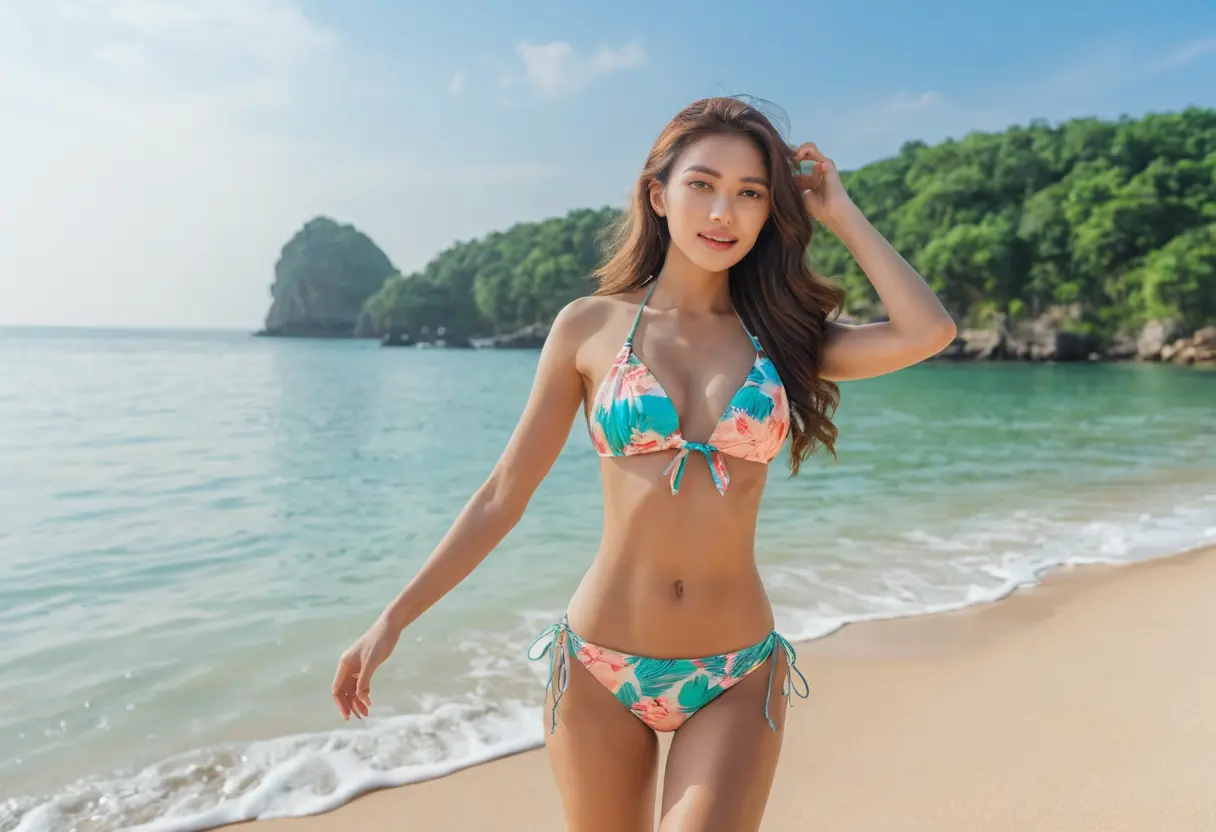In recent years, the rise of artificial intelligence (AI) has revolutionized many industries, from healthcare to entertainment, but one particularly controversial application is the generation of undress photos through AI technology. These photos, which depict individuals in various states of undress, can be created using deep learning models and generative adversarial networks (GANs). While AI-generated undress photos may offer intriguing artistic or commercial opportunities, they also raise significant ethical concerns, including issues of privacy, consent, and the potential for exploitation. This article will explore the ethics, societal implications, and potential consequences of AI-generated undress images, while considering both the positive and negative aspects of this rapidly evolving technology.
The creation of undress photos through AI relies on complex machine learning algorithms. These systems are typically trained on vast datasets containing images of real people, which allows them to generate highly realistic and convincing photos. Generative Adversarial Networks (GANs) are a key technology behind this process. GANs consist of two neural networks: a generator that creates images and a discriminator that evaluates them for realism. Over time, the generator learns to produce increasingly lifelike images of individuals, which can include alterations to clothing, appearance, and even poses.

These AI tools can be used in various ways, such as altering existing photos or creating entirely new images from scratch. While the technology can be employed for legitimate purposes like art or fashion, it is also being misused in harmful ways, such as generating non-consensual and explicit images of people.

The ethics of AI-generated undress photos are highly contentious. On one hand, AI can be used for creative purposes, allowing artists and designers to explore new concepts and generate unique visual content. On the other hand, the technology raises serious concerns when it comes to issues of consent, exploitation, and privacy.

One of the key ethical concerns surrounding AI-generated undress photos is the issue of consent. Many individuals, particularly women, may have their likenesses used in explicit AI-generated images without their knowledge or permission. This type of digital manipulation can be particularly damaging as it may be used for harassment, revenge porn, or other forms of exploitation. The fact that the images are often so realistic further complicates matters, as it can be difficult to distinguish between a real photo and an AI-generated one.
Another ethical concern is the potential for reinforcing harmful stereotypes. AI-generated undress photos may perpetuate unrealistic beauty standards or contribute to the objectification of individuals, particularly women. These photos may also be used to manipulate perceptions of body image, leading to harmful effects on mental health and self-esteem.
AI-generated undress photos also raise significant privacy concerns. When individuals' images are used without consent in explicit or suggestive contexts, it can severely compromise their privacy. With the rise of social media, deepfake technology, and AI image manipulation, people are increasingly vulnerable to having their personal identities altered or misused online.
In addition to the direct privacy violations, these AI-generated images can also lead to a loss of control over one’s digital persona. Once a manipulated image is shared online, it can quickly spread, and individuals may find it difficult or even impossible to have it removed. This creates a situation where personal identity is commodified and potentially exploited for others' gain.
The legal landscape surrounding AI-generated undress photos is still developing. In many countries, laws around digital privacy and image manipulation are not yet fully equipped to handle the rapid advancements in AI technology. Current legislation often focuses on the use of explicit images in general, but it may not cover AI-generated content specifically.
Some jurisdictions have begun to take steps toward regulating the use of deepfake technology and AI-generated images. For example, in the United States, several states have passed laws criminalizing the creation and distribution of non-consensual explicit images, often referred to as "revenge porn." However, these laws may not always extend to AI-generated images, creating a legal grey area that can be exploited by malicious actors.
To address these challenges, there is a growing call for the establishment of clearer regulations and stronger legal protections for individuals whose images are manipulated or used without consent. This may include implementing rules that require consent before AI models can use a person's likeness and increasing penalties for those who misuse the technology.
Despite the ethical and privacy concerns, AI-generated undress photos do not have to be viewed solely in a negative light. There are positive applications of this technology that can benefit various industries. For instance, AI-generated fashion and design models can help create new clothing lines, allowing designers to test outfits and styles without the need for physical photoshoots. Additionally, AI-generated imagery can be used for artistic expression, helping artists create innovative works that push the boundaries of visual art.
Furthermore, AI could be employed to create safe and respectful digital environments. For example, AI-generated avatars or characters could be used in video games or virtual reality, offering users the ability to interact with customized, non-human representations of themselves or others. When used ethically and responsibly, AI-generated images have the potential to contribute to a wide range of fields, from education to entertainment.
AI-generated undress photos present both exciting opportunities and serious ethical dilemmas. While the technology itself is not inherently harmful, its misuse can lead to significant privacy violations, exploitation, and the reinforcement of harmful stereotypes. As AI continues to evolve, it is crucial for lawmakers, tech companies, and society at large to develop clear ethical guidelines and legal frameworks that protect individuals' rights while allowing for the responsible use of AI in creative and professional contexts.
Ultimately, the responsible development and deployment of AI technologies will depend on balancing innovation with respect for privacy and consent. As the field progresses, it is essential for all stakeholders to remain vigilant about the potential risks and to ensure that AI serves as a tool for good rather than harm.
2024-11-05 22:10
2024-11-05 22:01
2024-11-05 21:51
2024-11-05 21:40
2024-11-05 20:37
2024-11-05 20:33